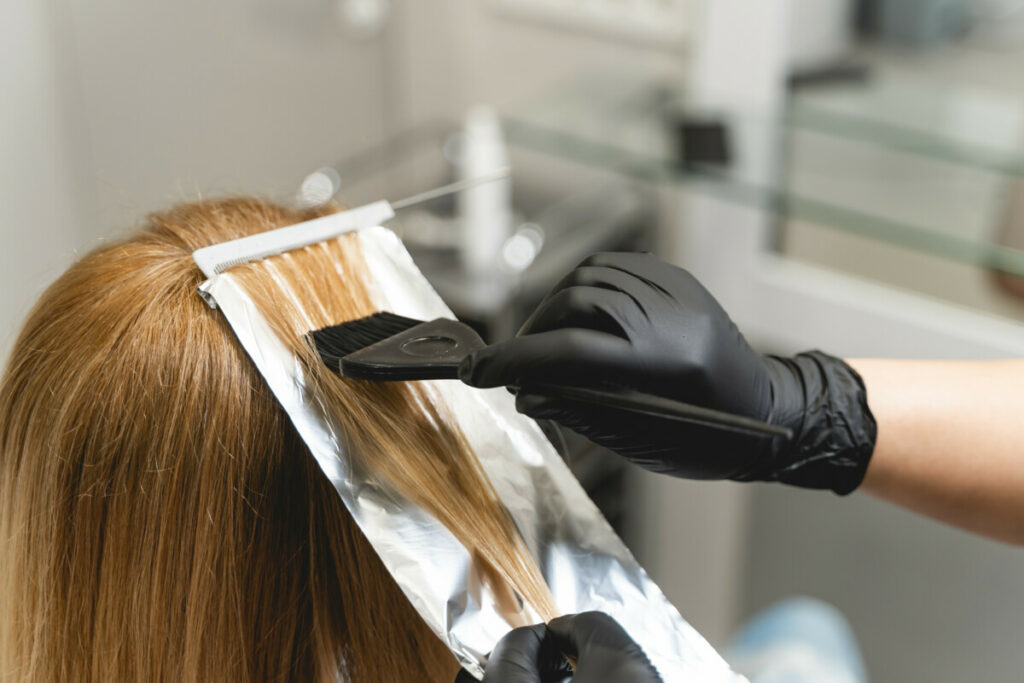
So you want to color your hair, but you’re not sure whether you should use semi-permanent or demi-permanent hair color. What’s the difference between the two, and how can you use those differences to make your choice?
Semi-permanent and demi-permanent hair color are both deposit-only coloring methods. Semi is easier to do and less damaging, but it doesn’t last as long as demi. Demi sometimes uses a small amount of ammonia mixed with a developer to deposit the color into the outer cuticle of the hair.
Those are the general differences. Let’s take a more specific look at how these types of color differ and what that means for your decision. Then, we can go over how to maintain your color.
Table of Contents
Semi-Permanent vs. Demi-Permanent Differences
When choosing between semi-permanent and demi-permanent hair color, you’re going to want to weigh the differences carefully, and there are a few differences.
Time Commitment
First is the difference that gives them their names: their degree of permanence. Semi-permanent colors might last up to twenty shampoos. Demi-permanent lasts a little longer, lasting about twenty-four shampoos. If you’re keeping a wash schedule intended to make the color last longer, that can end up being an extra four weeks compared to semi-color.
So, if you want the color to last a little longer, you should go with demi-permanent dye, but if you would rather be able to switch to a new color sooner, you should choose semi-permanent.
Your Hair’s Experience with Color
An important factor in your choice is whether you’ve colored your hair before. This is an important thing for your colorist to know because it can affect the process they need to put your hair through before coloring it. If your hair hasn’t been colored before, then they may need to prepare it differently depending on the type of color you want.
If you haven’t colored your hair before, you should start with a semi-permanent color. It takes the least commitment and never contains any damaging ammonia. If you have colored your hair before and you can commit to demi-permanent color, you can comfortably ask for that instead. Just make sure to tell your colorist what types of colors you’ve used in the past. It is extremely important that you tell your stylist what you have used previously on your hair; a lot of at-home colors contain metallics that can affect how the color processes.
Demi-permanent doesn’t always involve ammonia, but sometimes it does have a small amount. When it has ammonia, it doesn’t have enough to badly damage your hair, but you don’t want to surprise “virgin” hair with it.
Applying demi-permanent color is also a more complicated procedure, so you might want to get someone who knows the process to do it rather than trying to do it yourself.
What Color Do You Have in Mind?
The better choice can also depend on the color change you want. Demi-permanent is good for changing warm colors to cool and vice versa, while semi-permanent is good at boosting the quality of your current hair color. For example, it can counteract fading reds and yellowing blondes with semi-permanent hair dye.
What are Partial Semi-Permanent and Demi-Permanent?
When you don’t want to color your whole head of hair, you might want to consider a partial color. Partial color is where the colorist uses foil to isolate parts of your hair during the coloring process. The result is that only a few specific parts of your hair are colored.
That could mean a variety of things. It could mean that you get the highlights only in the front to frame your face, or you could have highlights sitting interspersed on top of your naturally colored hair as if it were naturally colored by the sun. You could also get it colored just at the ends. It’s really up to you and how you want your hair to look.
When you have a colorist give you partial coloring, they may recommend a lightening of the base so that it can stand out better against the natural color of your hair, but you can forgo that if you only want hints of the highlight color.
Partial color costs less to get done at a salon than full color, but it’s not usually a flat rate. Normally, the charge for partial color will have a starting price, and then it will increase depending on how many colors you want. You can’t get full color by asking for a partial color that covers all of your hair.
Partial semi-permanent color is where you use semi-permanent color to partially color your hair, and partial demi-permanent is where you use demi-permanent color for that purpose. When choosing between the two, you will want to consider the same factors as you would for a full color, especially how each type of color handles certain color changes.
Even if you’re experienced with coloring your own hair with full color, you should probably get someone else to do your partial coloring since working with the foil will be a lot more difficult to do on your own hair since you won’t be able to see it directly and you will have to move your hands based on feeling or mirrors, which can make it a difficult and tedious process.
How to Maintain Hair Colored with Semi-Permanent or Demi-Permanent Dye

If you want the color to last as long as possible, you’re going to have to take proper care of it. Maintenance includes how you wash your hair, as well as how you protect it from damage, whether that’s damage from the sun, water, or even split ends.
If your hair was suffering from split ends before the coloring, right after the coloring is a great time to get those trimmed, but only if the trim is all you want. If you want it cut to style, do that before the coloring or wait at least a week after the coloring for the cut.
Immediately after the cut, you’re going to want to wait 72 to 96 hours to wash your hair. Until then, wear a shower cap to protect it from water while you bathe, and ask your colorist if you can use dry shampoo on it. After that, shampoo it once and then wait 72 more hours before shampooing it again. To make it last as long as possible, wash it once a week.
Use cool water to wash your hair to avoid swelling the cuticles, and avoid using shampoos with sulfates.
